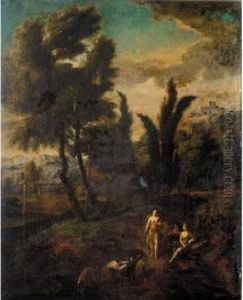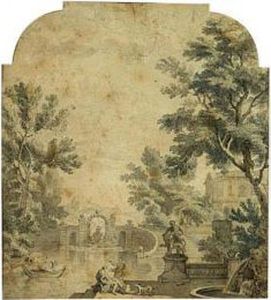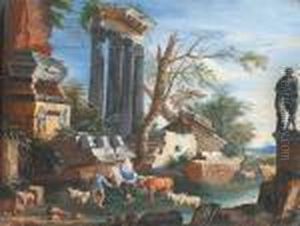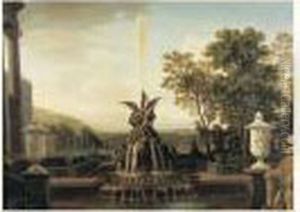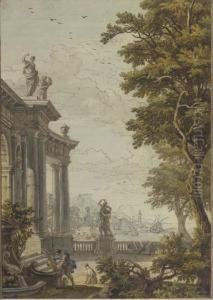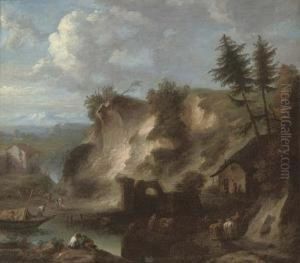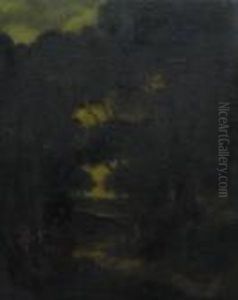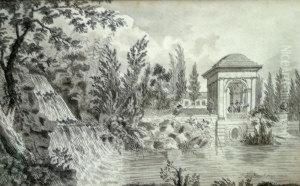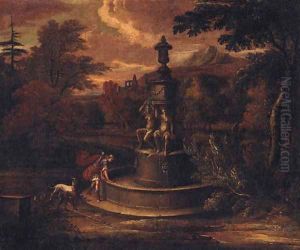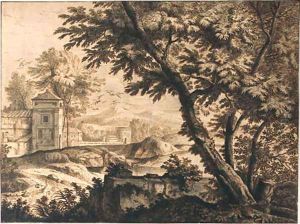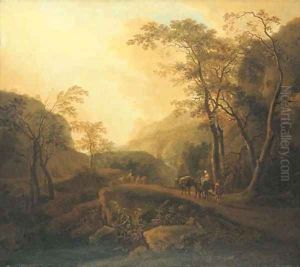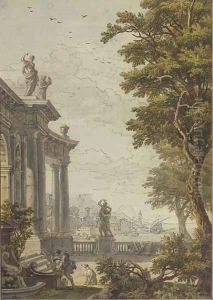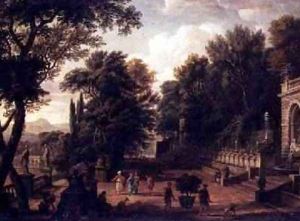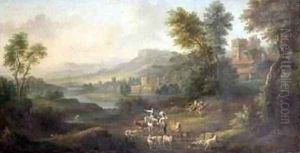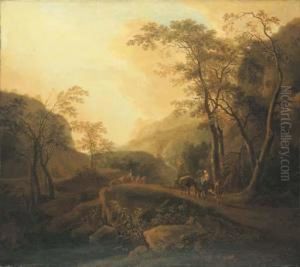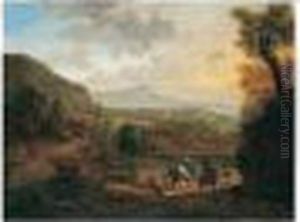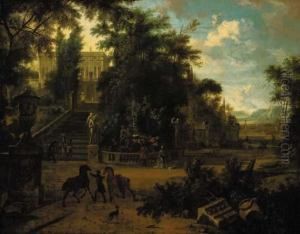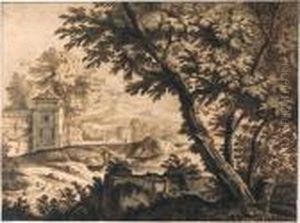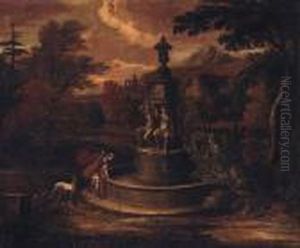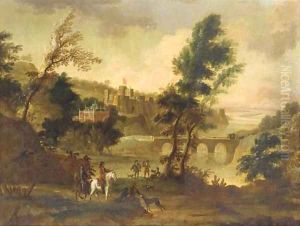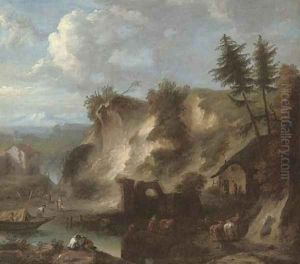Isaac de Moucheron Paintings
Isaac de Moucheron was a Dutch painter and draughtsman, known for his landscape and decorative fresco work. He was born in 1667 in Amsterdam into an artistic family; his father was the painter Frederik de Moucheron, from whom he received his initial training. Isaac developed an interest in the Italianate landscape tradition, which was popular in the Netherlands during the 17th century. This genre of painting was characterized by idealized landscapes inspired by the scenery of the Italian countryside, often populated with classical ruins and small figures.
De Moucheron's talent and his exposure to the Italianate style allowed him to develop his own distinct approach to landscape painting. He traveled extensively in his youth, visiting France and possibly Italy, where he would have had the opportunity to study the works of the masters firsthand. He settled in Amsterdam and became a successful artist, with clients commissioning works for their grand houses and gardens.
Apart from landscape paintings, he also created decorative works for interiors, which included wall frescoes and overdoor pieces. These works often depicted pastoral scenes, classical landscapes, and allegorical subjects. His style was known for its elegant figures, fine detail, and harmonious compositions, which reflected the taste of the Dutch elite for luxurious and refined art.
Isaac de Moucheron was also a teacher, passing on his skills to the next generation of artists. His influence can be seen in the work of his students and followers, who continued the tradition of the Italianate landscape in the Netherlands. He died in 1744, leaving behind a legacy that is recognized for its contribution to Dutch Golden Age painting and its long-lasting influence on the decorative arts in Europe.


